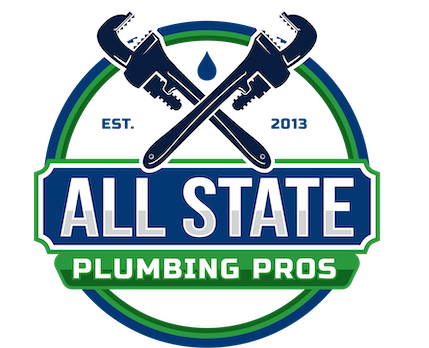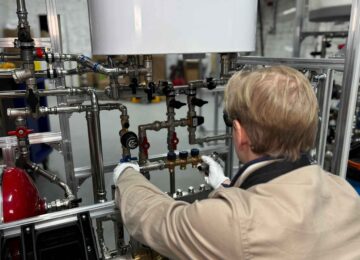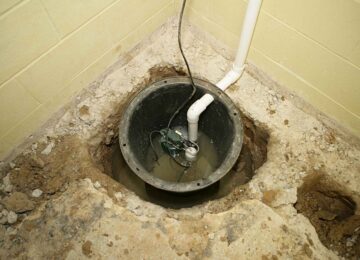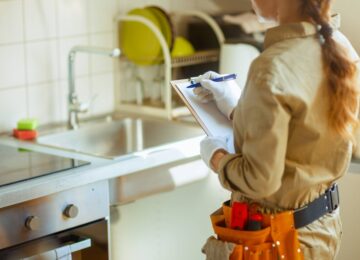Plumbing emergencies don’t wait for normal business hours. A burst pipe, a gas leak, or an overflowing toilet can cause serious damage within minutes, leaving homeowners scrambling for solutions. Knowing what to do in a plumbing emergency can help you stay calm, act fast, and minimize damage while you wait for a professional plumber to arrive.
Whether it’s a leaking water heater, a frozen pipe, or a sump pump failure, emergency plumbing situations require quick thinking and informed action. This guide covers the most common plumbing emergencies, what steps you should take immediately, and how to protect your home and health during a crisis.
Common Plumbing Emergencies You Should Be Prepared For
Plumbing emergencies come in many forms, and some can develop from issues that initially seem small. Recognizing the signs of a serious problem helps you take immediate steps to avoid costly repairs and health hazards.
Some of the most common plumbing emergencies include:
- Gas leaks: If you smell gas, this is a serious fire hazard. Evacuate the home immediately and call your local gas company or fire department. Do not use electrical appliances or turn on lights.
- Burst pipes: When a pipe bursts, it can release gallons of water per minute. Shut off the water supply at the main valve to stop the flooding and contact an emergency plumbing company.
- Overflowing toilets: This can cause unsanitary water damage and should be addressed immediately. Turn off the water at the shut-off valve near the toilet base.
- Clogged drains or sewer backups: If water backs up into sinks or tubs, you may have a blocked main sewer line. This can be hazardous, so avoid using plumbing fixtures until the problem is resolved.
- Leaking water heaters: A leaking water heater can flood basements or utility rooms. Shut off both the water and power supply to the unit and call a plumber immediately.
If you notice any of these issues, don’t delay. Call a licensed emergency plumber who can assess the situation and restore safety and function to your plumbing system.
Know Your Plumbing System Before an Emergency Strikes
Being familiar with your home’s plumbing layout can save you valuable time when an emergency hits. The most important part of your system to locate ahead of time is your main water shut-off valve. This valve controls the flow of water into your home and is usually located near the water meter or where the main line enters your property.
Beyond knowing where to shut off the water, homeowners should:
- Locate shut-off valves for individual fixtures (toilets, sinks, appliances).
- Know how to shut off the gas supply if there’s a gas smell.
- Keep an updated list of emergency contact numbers, including your local plumber and gas company.
- Learn the basics of your water heater, its shut-off switches, and signs of failure.
Understanding your plumbing system empowers you to take control in urgent moments. It also helps when explaining the issue to your emergency plumber over the phone.
How to Prevent Frozen Pipes in Winter
Frozen pipes are among the most preventable yet destructive plumbing emergencies. When temperatures fall below freezing, water inside unprotected pipes can freeze and expand, causing the pipe to burst and release gallons of water into your home.
Preventive steps every homeowner should take include:
- Insulate exposed pipes, especially in unheated areas like basements, attics, and crawl spaces.
- Let cold water drip from faucets during severe cold to keep water moving.
- Drain garden hoses and shut off outdoor water supplies in the fall.
- Keep your home warm, even if you’re away.
- Monitor signs of freezing, such as reduced water pressure or visible frost on pipes.
If you suspect a frozen pipe, turn off the main shut-off valve and call a professional. Do not attempt to thaw pipes with open flames; use a hairdryer or heat lamp with caution.
Sump Pump Maintenance: Avoiding Basement Floods
A sump pump is your first line of defense against basement flooding. When it fails, even a small leak can lead to major water damage. Regular sump pump maintenance can make all the difference during a storm or plumbing emergency.
Here’s how to keep your sump pump in top shape:
- Test the pump monthly by pouring water into the pit. Ensure it activates and drains properly.
- Clean the sump basin of debris and check for clogged discharge lines.
- Install a battery backup system in case of power outages.
- Listen for strange sounds or inconsistent performance.
If your sump pump fails unexpectedly, and water is already rising, act fast to move valuables to a dry area and call for emergency plumbing services.
Sewer Line Problems: Warning Signs and Solutions
When your sewer line backs up, you may notice gurgling drains, foul smells, or slow water flow throughout your home. Left unchecked, sewer backups can become a serious health hazard.
Steps to take if you suspect a sewer line issue:
- Stop using all plumbing fixtures to avoid making the situation worse.
- Check for tree roots or obstructions if you have older pipes.
- Call a plumber immediately to inspect the main sewer line.
- Ask about video camera inspections for accurate diagnosis.
Preventive maintenance can go a long way. Schedule annual inspections, especially if your home is older or you’ve had issues in the past.
What to Do in a Plumbing Emergency
In any plumbing emergency, acting quickly and calmly is key. Your first move should always be to stop the flow of water or gas and then contact a licensed emergency plumber.
Here’s a general checklist to follow:
- Shut off the main water valve (or fixture-specific valve if localized).
- Turn off the power or gas supply to affected appliances, like your water heater.
- Avoid using sinks, toilets, or drains until the issue is diagnosed.
- Document damage with photos for insurance purposes.
- Call an emergency plumbing service that operates 24/7.
Stay out of flooded areas with electrical wiring or gas appliances. Your safety comes first.
Dealing with Water Leaks and Minor Flooding
Even a small leak can signal a larger plumbing problem. Water leaks may go unnoticed until you find water stains, warped flooring, or mold growth.
Take these steps if you spot a leak:
- Shut off the water at the nearest shut-off valve.
- Use towels or a wet/dry vacuum to remove excess water.
- Place buckets or containers to catch drips.
- Check your water pressure; a sudden drop could indicate a pipe issue.
- Contact a professional plumber to inspect for further damage.
Leaks near electrical wiring or behind walls require extra caution. Never ignore persistent dripping or pooling water.
Choosing the Right Emergency Plumbing Company
When every minute counts, choosing a reliable local plumber can make a big difference. Look for companies that offer true 24/7 emergency services, are licensed and insured, and have great customer reviews in your area.
Ask the following questions before agreeing to service:
- Are you licensed in my state?
- What are your emergency call-out fees?
- Can you provide an estimate over the phone?
- Do you have references from recent emergency jobs?
Clear communication and transparency are critical during high-stress situations. A reputable plumber will walk you through the issue and explain the next steps.
What to Expect When the Plumber Arrives
Once your emergency plumber arrives, they’ll assess the situation quickly and begin damage control. Be prepared to provide access to:
- The main shut-off valve
- Affected appliances or fixtures
- Past plumbing records, if available
Most plumbers will arrive with equipment such as leak detectors, video pipe inspection tools, and water extraction pumps. Ask for a breakdown of recommended repairs and associated costs. Some services may be covered by insurance, depending on the situation.
Cleaning Up After the Emergency
Once the plumbing issue is resolved, the cleanup begins. This stage is critical for preventing mold, structural damage, and future plumbing problems.
Steps include:
- Drying all affected areas using fans or dehumidifiers
- Disinfecting surfaces exposed to dirty water or sewage
- Replacing damaged insulation, flooring, or drywall
- Filing an insurance claim with documentation and photos
Consider hiring a water damage restoration service for severe flooding. They’ll ensure all moisture is removed and repairs meet safety standards.
Understanding Emergency Plumbing Costs
Emergency plumbing often involves after-hours fees and premium service charges. Rates can vary based on time of day, service type, and damage severity.
To manage costs:
- Ask for an upfront estimate, including diagnostic and labor fees
- Inquire about trip charges and material costs
- Understand that major repairs (e.g., pipe replacement, water heater installation) may require follow-up visits
- Check if your homeowner’s insurance covers sudden water damage
Having an emergency plumbing budget or home repair savings fund can reduce financial stress.
Final Emergency Plumbing Checklist
Before an emergency happens, make sure you:
- Know how to locate and operate your water shut-off valve
- Have contact info for a local emergency plumbing service
- Keep basic tools and towels near plumbing areas
- Winterize pipes before freezing temperatures
- Inspect water heaters, sump pumps, and drains regularly
Proactive maintenance goes a long way in avoiding costly and dangerous plumbing failures.
Conclusion
Plumbing emergencies can strike at any time, often when you’re least prepared. Knowing how to respond, whether it’s shutting off your water, identifying the source of a leak, or calling a licensed professional, can make all the difference in protecting your home and health. With the right knowledge and a clear plan, you can stay calm under pressure, minimize damage, and get your plumbing system back in working order quickly and safely.
If you’re dealing with a plumbing emergency or have questions about your system, don’t wait. All State Plumbing Pros is ready to assist with fast, professional service whenever you need it. Contact us today to get in touch and schedule a visit from one of our licensed experts.
FAQs
What are the most common plumbing problems?
Some of the most common plumbing problems include leaking faucets, clogged toilets, slow drains, water heater issues, and low water pressure. These issues can range from minor inconveniences to signs of more serious problems in your plumbing system.
What are the safety precautions in plumbing?
Always shut off water and electricity before inspecting a leak or broken fixture. Avoid handling wet electrical equipment. For gas leaks or sewage backups, evacuate the area and contact professionals immediately. Never attempt repairs beyond your comfort or skill level.
What do you do when plumbing?
When dealing with plumbing tasks, always turn off the water supply before starting. Use the correct tools for the job and double-check connections. If you’re unsure, it’s best to call a professional plumber to prevent accidental damage.
Is a leaking toilet an emergency at night?
A leaking toilet may not be a full emergency unless it’s overflowing or causing water damage. Shut off the valve behind the toilet and place towels to contain water. Call a plumber the next morning unless

![What to Do in a Plumbing Emergency: Quick Tips and Solutions Plumbing emergencies don’t wait for normal business hours. A burst pipe, a gas leak, or an overflowing toilet can cause serious damage within minutes, leaving homeowners scrambling for solutions. Knowing what to do in a plumbing emergency can help you stay calm, act fast, and minimize damage while you wait for a professional plumber to […]](https://allstateplumbingct.com/wp-content/uploads/2025/07/What-to-Do-in-a-Plumbing-Emergency-Quick-Tips-and-Solutions-750x420.jpg)



Leave a Reply